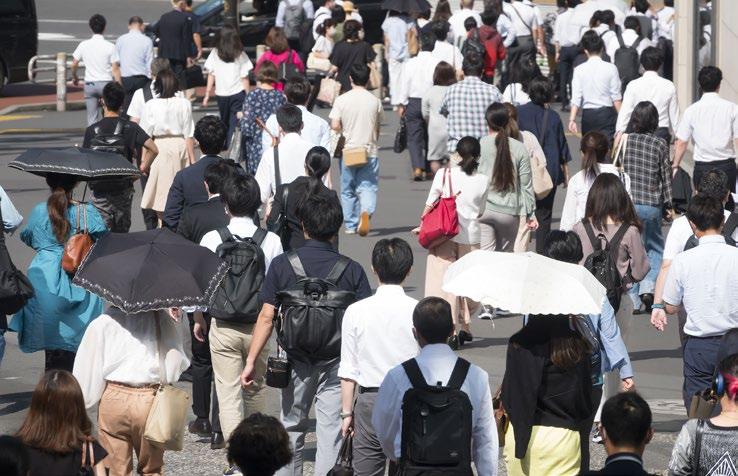The Pantomath
..1032 people died and the number of heatwave related hospitalisations exceeded 34,000...
Researching heatwaves in Japan Glenn McGregor
As a climatologist I am interested in the causes and consequences of extreme weather and climate events. Since experiencing the ‘mega’ August 2003 European heatwave while on holiday in southern England, where temperature records at that time were broken reaching 38.5oC, and subsequently researching the social impacts of this impressive event, I have come to understand the importance of heatwaves. Not only do these phenomena exert a heavy toll on society and economy but also the impacts on so-called ecosystem services or nature can be disabling. Over the last few months, I have been working on a number of heatwave related projects. These include an edited book on the utility of climate science for developing healthy cities with a focus on how to manage extreme urban heat events, a sole authored book on the causes and consequences of and responses to heatwaves and joint research
page 12
with Japanese colleagues at Rissho, Tokyo and Tsukuba Universities on the characteristics of heatwaves in Japan. So why work on heatwaves in Japan? The simple answer is, while there has been much work done in the past on the health impacts of heatwaves, much remains to be discovered about the physical causes and characteristics of heatwaves in Japan. Knowing about the
Knowing about the socalled physical drivers of heatwaves and the nature of the heatwave season, provides the opportunity to develop management strategies for dealing with such climate risks now and in the future
so-called physical drivers of heatwaves and the nature of the heatwave season, provides the opportunity to develop management strategies for dealing with such climate risks now and in the future. That heatwaves are an important climate characteristic of Japan which can trigger noticeable social impacts is amply demonstrated by the July 2018 heatwave event when 1032 people died and the number of heatwave related hospitalisations exceeded 34,000. The fact that another impactful heatwave event occurred in 2019 and the severity of the 2018 event has been partly attributed to observed anthropogenic climate change makes a compelling imperative to understand heatwaves. To date research with my Japanese colleagues has mainly concentrated on investigating the inter-annual variation of heatwave occurrence in Tokyo. For example, if we say a heatwave is made up of days when the actual daily temperature exceeds a given temperature threshold, then those days above that threshold can be identified as potential heatwave days – in Figure 1 these are all the days above the orange maximum temperature threshold line. Adding a minimum duration criteria for the number of consecutive days that exceed the threshold (e.g. 3 days) narrows down the potential heatwave events to just a few – in fact four for the summer period in 2018 for Tokyo. Note using this kind of definition allows the identification of unusually warm periods for any time of the year – even winter can have unusually warm weather. Knowing a heatwave is a period of three consecutive days or more above the 90th percentile maximum temperature value allows the counting of the number of summer heatwave events as illustrated in Figure 2. This shows some evidence of a tendency for a greater frequency of heatwaves since 2000. There is also a hint for Tokyo that the first heatwave of the summer season is tending to occur earlier in the year – there is a greater occurrence of the first heatwave in the month of May for the latter half of the period 1972 – 2018 as shown in Figure 3. As the research on heatwaves in Japan is still in its early stages, it is necessarily descriptive. However, the next phase of research will involve investigating what large scale climate mechanisms drive the year to year variation of heatwave occurrence and the possible earlier onset of the heatwave season, along with an analysis of the specific weather patterns associated with some of Japan’s ‘killer’ heatwaves.










